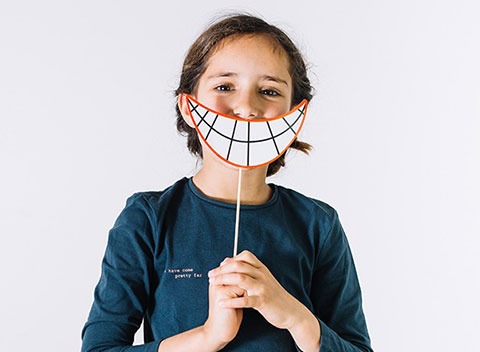Speech therapy for Orofacial Myofunctional Disorders
What is Orofacial Myofunctional Disorder?
An orofacial myofunctional disorder (OMD) is when there is an abnormal lip, jaw, or tongue position during rest, swallowing or speech. Orofacial Myofunctional Disorders are disorders of the muscles and functions of the face and mouth.

OMDs may affect, directly and/or indirectly, breastfeeding, facial skeletal growth and development, chewing, swallowing, speech, occlusion, temporomandibular joint movement, oral hygiene, stability of orthodontic treatment, facial aesthetics, and more.
Most OMDs originate with insufficient habitual nasal breathing or with oral breathing. The subsequent adaptation of the muscles and the orofacial functions to a disordered breathing pattern creates many OMDs.
Orofacial Myofunctional Disorders may impact treatments by orthodontists, dentists, dental hygienists, speech-language therapists, and other professionals working in the orofacial area.
Speech Problems that may develop from an OMD?
A person with abnormal oral muscle patterns may suffer a lisp or have difficulty in articulating sounds.
If muscles in the tongue and lips are incorrectly postured, this can prevent a person from forming sounds of normal speech.
Improper oral muscle function may additionally lead to temporomandibular joint dysfunction, headaches, stomach distress (from swallowing air), airway obstruction, and other health challenges.

There are specific speech challenges that are directly tied to myofunctional dysfunction. These are:
- “T, D, L, N” Sounds: These four sounds require precise movement and placement of the tongue. If a patient has a weak tongue, they will exhibit poor control of their oral muscles.
- “R and L” Sounds: When a child has difficulty with these sounds, it is a sign of a tongue-tie. The child cannot be successful with speech therapy for these sounds if a physical condition exists that keeps their tongue from being placed in the proper position for the formation of the sounds.
- “S” Sound: A lisp is when a patient has trouble making the proper, crisp “S” sound. A lisp usually accompanies a tongue thrust habit and mouth breathing.
How to treat Orofacial Myofunctional Disorder?
It is important to understand that there are two specialties that treat OMD, but there are some differences.
Myofunctional therapy is the first one and focuses on the muscle function of the facial and oral muscles as well as the stability and structure of the mouth and jaw.
Speech therapy, the second one, focuses on learning and cognitive issue associated with speech concerns.
Myofunctional therapy is an area that neither dental hygienists nor speech therapists are usually trained in. However, advanced training brings these two areas together, ideally working together to advance the treatment of the patient
Myofunctional therapy is considered a cornerstone for the successful treatment of speech issues. Since myofunctional therapy focuses on the tongue and the muscles, it only makes sense that having proper function and habits of the muscles will make speech therapy more successful. Making sure the tongue has proper placement and muscle control will help the speech therapist with speech therapy.

How this Therapy Program Can Help You?
This therapy program first looks for any physical obstacles for treatment, such as a tongue-tie. After a thorough examination of physical obstacles, it teaches the precise placements and muscle control needed for proper sound formation. Again, remember that myofunctional therapy is not correcting speech, but rather it is correcting position. It might be necessary to follow speech therapy afterwards to receive the proper help from both therapies.
With myofunctional therapy, a patient can regain the joy of eating, speaking, breathing, and even sleeping more soundly.
Cosmetic improvements can help restore confidence and self-esteem.
Conclusion
We believe that everyone deserves to be educated about myofunctional disorders and treated if they suffer from OMDs.
We endeavor to increase awareness of OMD among the medical, dental, and academic communities to support the acceptance and progress of this profession world-wide.

